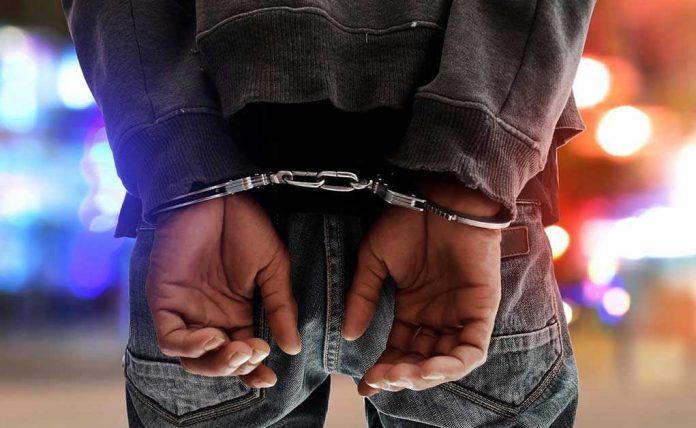
What does it mean for a university to play on, just hours after a violent incident erupts within its own ranks?
Story Snapshot
- UAB offensive lineman David Mincey arrested for stabbing two teammates mere hours before a scheduled game.
- The university proceeded with the high-profile matchup, despite the violent disruption in the team’s own facility.
- Victims hospitalized with non-life-threatening injuries, while some teammates opted out of playing.
- The incident has sparked debate over campus safety, institutional priorities, and the culture within collegiate athletics.
A Shocking Breach at the Heart of a Football Program
On the final home game day of UAB’s football season, chaos erupted behind the scenes. In the early morning, David Mincey, an offensive lineman for the University of Alabama at Birmingham, allegedly stabbed two of his own teammates at the secure UAB Football Operations Center. The attack sent both victims to the hospital, each with injuries deemed non-life-threatening, and left the university grappling with an incident almost unheard of in the annals of college sports. The suspect was quickly taken into custody by campus police, but the damage to team unity and institutional reputation was already done.
Despite the gravity of the attack, the university issued a statement: there was no ongoing threat to campus. No postponement, no cancellation. The game against the University of South Florida would proceed at 3 p.m., as scheduled, just hours after the violence. This decision would quickly become the subject of heated debate, both on campus and across the broader college football community. Several players, shaken by the morning’s events, chose not to participate. The rest took the field, their minds undoubtedly clouded by the surreal events that had unfolded mere hours before kickoff.
A Crisis of Priorities: Why the Game Went On
UAB’s choice to play through the crisis reveals the immense pressures facing modern college athletics. This wasn’t a minor infraction or a typical disciplinary issue—it was a violent attack between teammates in the sanctity of their own facility. The university’s administration and interim head coach Alex Mortensen faced a dilemma: prioritize player welfare and postpone the game, or press on for the sake of commitments, tradition, and perhaps even revenue. By afternoon, the players who did take the field did so under a cloud of uncertainty and unease, while the campus community watched on, many questioning if the right call had been made.
Interim coach Mortensen confirmed post-game that both victims were in stable condition, but the incident left a scar on the program. The decision to proceed may have been intended to project normalcy, but it also raised uncomfortable questions about the values driving collegiate sports. Is the show simply too big to stop, no matter the circumstances?
The Ripple Effect: Safety, Culture, and Scrutiny
The fallout from the UAB stabbing incident reaches far beyond one locker room. Historically, college football has seen its share of altercations, but an incident of this nature—a stabbing between teammates, hours before a game, in a secure facility—is exceedingly rare. The event draws immediate attention to the culture within football programs, the adequacy of mental health resources, and the systems in place for conflict resolution. With the criminal investigation ongoing, the university faces both legal and ethical challenges, as well as possible scrutiny from the NCAA or its conference. The broader sector may now face renewed calls to re-examine crisis management and athlete welfare policies.
Stakeholders include not just the direct participants—Mincey, the victims, and their families—but the entire UAB football organization, the student body, alumni, and the wider college sports community. Institutional reputation, player morale, and the safety of athletes are now under the microscope. Some argue UAB should have postponed the game to focus on the team’s well-being; others claim that moving forward honored obligations and kept campus life on schedule. What is not in dispute: the incident has forced a reckoning with the true priorities of college athletics.
Seeking Answers: Motive, Aftermath, and the Road Ahead
As of now, the motive behind the attack remains undisclosed. Both victims continue their recovery, while Mincey faces serious charges. UAB’s administration is likely reviewing team safety protocols, though no official overhaul has been announced. The incident’s immediate shock has faded, but its implications remain. Will this episode catalyze reform in athlete support systems, or simply fade as another cautionary tale in the high-stakes world of college sports? The answers—and the accountability—are still to come.
Sources:
NBC Sports: UAB player stabbed two teammates before USF game, which proceeded as scheduled
CBS Sports: UAB football players stabbing team facility













